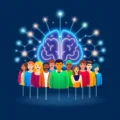Ever found yourself wondering who is truly driving the breakneck pace of modern financial markets? Who is executing trades in fractions of a second, analyzing vast oceans of data before you can even register a price change? The answer, increasingly, points towards sophisticated automated systems.
Welcome to the world of Algorithmic Trading, where the trading floor is less about shouting brokers and more about complex code, and where Artificial Intelligence (AI) is rapidly taking center stage. These intelligent algorithms are not just participants; they are reshaping the very fabric of global finance, identifying strategies and executing millions of trades automatically.
It’s a game played at the speed of light, focusing on automation and the pursuit of minuscule advantages that, scaled across countless transactions, can yield significant returns. And crucially, it operates free from the unpredictable and often detrimental influence of human emotion – a factor that, let’s be honest, isn’t always kind to your investment portfolio. This isn’t territory exclusive to giant financial institutions anymore; its influence is spreading, making its mark on broader financial landscapes. Quite the paradigm shift, wouldn’t you say?
Curious for a quick visual primer on this fascinating topic? Check out this short explainer:
Table of Contents
What Exactly is Algorithmic Trading?
At its core, algorithmic trading, often shortened to algo trading, involves using computer programs to execute trades at high speeds and volumes. These programs follow a predefined set of instructions or rules (the algorithm) based on factors like timing, price, quantity, or any other market condition. When these specific conditions are met, the algorithm automatically initiates a trade.
Think of it as automated instructions telling a computer *exactly* when, how, and what quantity of a financial asset (like stocks, bonds, currencies, or commodities) to buy or sell. This can range from simple instructions like “buy 100 shares of XYZ if its price drops below $50” to incredibly complex strategies.
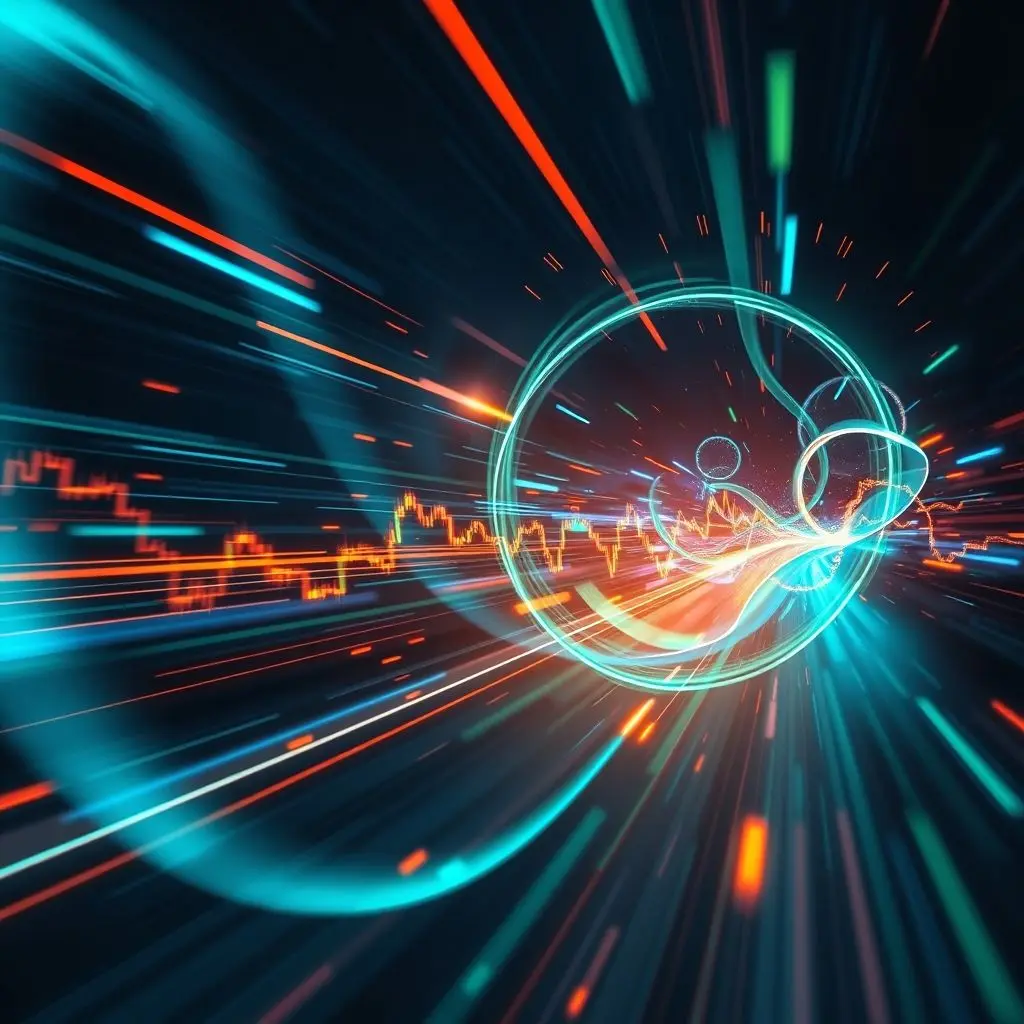
The AI Advantage: Bringing Intelligence to the Algorithm
While basic algorithmic trading existed before the widespread adoption of AI, the integration of Artificial Intelligence and Machine Learning (ML) has fundamentally changed the game. Traditional algorithms are static; they follow fixed rules. AI/ML algorithms are dynamic; they can learn, adapt, and improve over time.
Here’s how AI elevates algorithmic trading:
- Data Analysis at Scale: AI systems can process and analyze petabytes of historical and real-time market data – price movements, trading volume, news headlines, social media sentiment, economic indicators, and more – far beyond human capacity. They can identify subtle patterns and correlations that might indicate potential trading opportunities.
- Strategy Development: Instead of a human trader defining rigid rules, ML models can be trained to discover profitable trading strategies on their own. They can backtest these strategies against historical data to gauge their potential effectiveness under various market conditions.
- Predictive Power: AI algorithms can build predictive models to forecast short-term price movements or volatility, helping traders anticipate market shifts rather than just reacting to them.
- Adaptability: As market dynamics change, AI algorithms can learn from new data and adjust their strategies accordingly. This continuous learning is a significant edge over static rule-based systems.
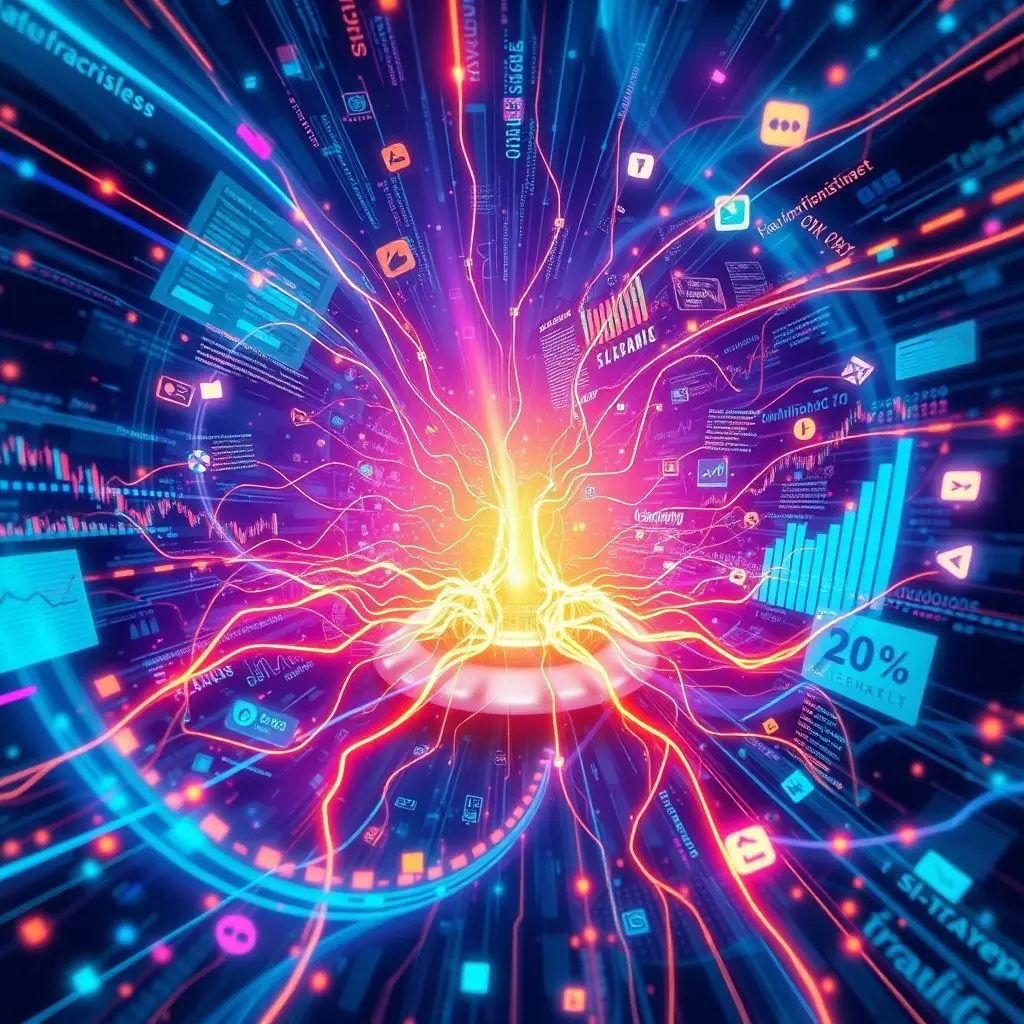
How AI-Powered Algo Trading Works in Practice
The process typically involves several stages:
- Data Ingestion: Collecting vast quantities of structured and unstructured data from various sources (exchanges, news feeds, economic calendars, etc.).
- Feature Engineering: Transforming raw data into relevant features that the AI model can understand and learn from (e.g., calculating moving averages, volatility metrics, sentiment scores).
- Model Training: Using historical data to train ML models (like neural networks, decision trees, or reinforcement learning agents) to identify patterns, predict outcomes, or learn optimal trading actions.
- Strategy Formulation: The trained model outputs potential trading signals or complete strategies based on its analysis.
- Execution: Integrating the AI system with brokerage or exchange APIs to automatically place buy/sell orders when the model identifies an opportunity. This execution often happens via High-Frequency Trading (HFT), where trades occur in microseconds.
- Monitoring and Refinement: Continuously monitoring the algorithm’s performance in real-time and retraining the model with new data to improve its accuracy and adapt to changing market conditions.
Different types of AI-driven strategies exist, including:
- High-Frequency Trading (HFT): Executing a large number of orders at extremely high speeds across multiple markets and exchanges. AI can help identify fleeting arbitrage opportunities or predict very short-term price movements.
- Statistical Arbitrage: Identifying and exploiting statistical discrepancies in the prices of related assets. AI can find complex correlations and temporary mispricings.
- Sentiment Analysis Trading: Using AI to analyze news articles, social media, and other text sources to gauge market sentiment and make trading decisions based on whether the collective mood is bullish or bearish on an asset.
- Market Making: Placing limit orders to buy and sell simultaneously to profit from the bid-ask spread. AI can optimize pricing and inventory management for market makers.
Key Advantages of AI in Algorithmic Trading
The integration of AI brings compelling benefits:
- Unmatched Speed and Efficiency: Algorithms can react to market changes and execute trades far faster than any human trader. This is crucial for capturing fleeting opportunities.
- Elimination of Emotional Bias: AI makes decisions purely based on data and programmed logic, removing human emotions like fear, greed, or panic that can lead to irrational trading decisions.
- Capacity to Process Complex Strategies: AI can handle intricate strategies involving multiple variables and complex relationships that would be impossible for humans to manage manually.
- Backtesting and Optimization: Algorithms can be rigorously tested and optimized using vast amounts of historical data before being deployed in live markets, reducing the reliance on intuition.
- Scalability: Once an algorithm is developed, it can be scaled to trade multiple assets or markets simultaneously without a proportional increase in human effort.
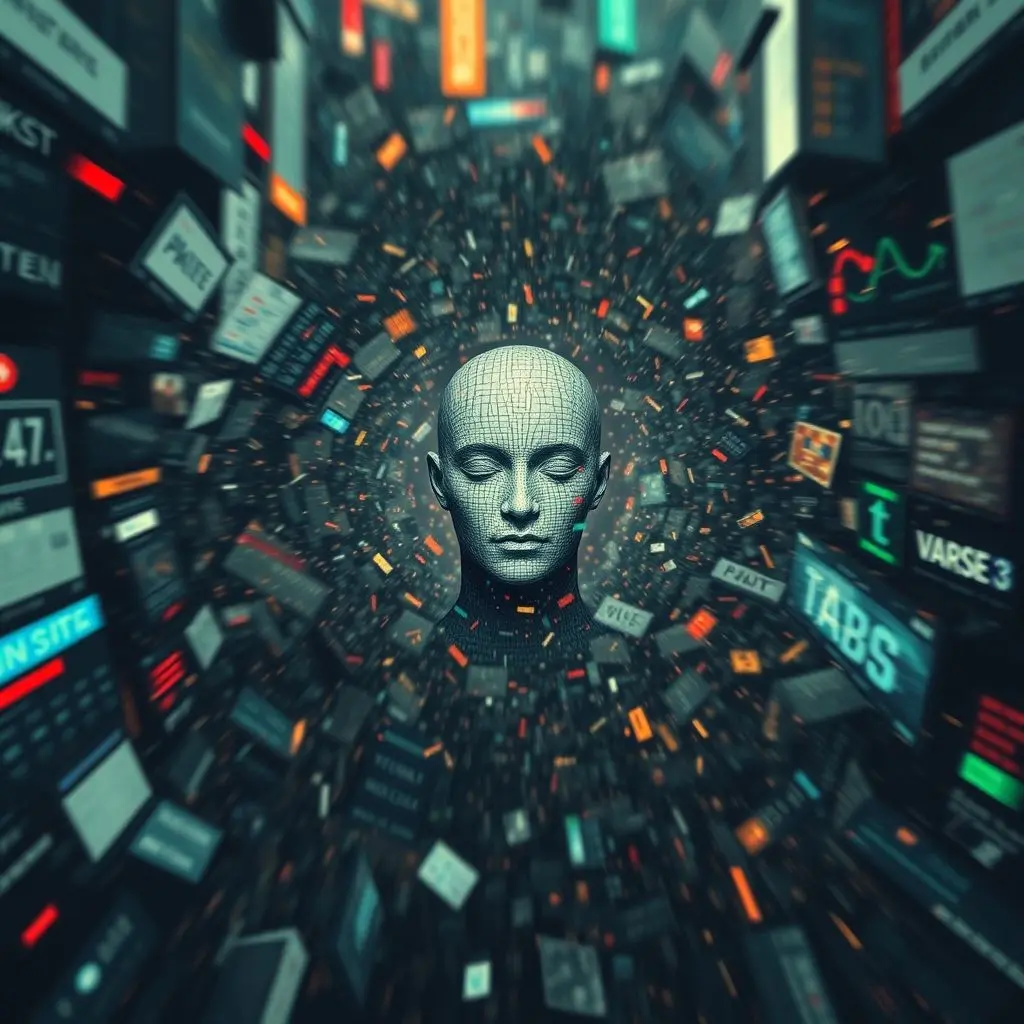
Challenges and Risks on the AI Trading Frontier
Despite the benefits, the path of AI in trading is not without its hurdles and dangers:
- Overfitting: AI models trained too closely on historical data might perform poorly when encountering new market conditions they haven’t seen before.
- Black Swan Events: Unexpected, rare events (like the 2008 financial crisis or the COVID-19 pandemic) can cause algorithms to fail spectacularly if they haven’t been trained to handle such unprecedented scenarios.
- Technical Glitches: Errors in code, connectivity issues, or hardware failures can lead to significant losses in automated trading systems. The infamous “Flash Crash” of 2010 is often cited as an example of high-speed algorithmic trading contributing to extreme volatility.
- Market Manipulation Concerns: Sophisticated algorithms could potentially be used for manipulative practices, requiring vigilant regulatory oversight.
- Lack of Interpretability (Black Box Problem): Some advanced AI models, particularly deep learning networks, can be opaque, making it difficult to understand *why* they made a specific trading decision. This can be problematic for risk management and debugging.
- High Barrier to Entry (Development Costs): Developing, testing, and maintaining sophisticated AI trading systems requires significant technical expertise and computational resources, although this is slowly changing.
Is Algorithmic Trading Just for the Big Players?
Historically, yes. The significant infrastructure and expertise required meant algo trading was primarily the domain of large hedge funds, investment banks, and proprietary trading firms. However, the landscape is shifting.
The rise of accessible trading platforms offering API access, combined with open-source libraries for data analysis and machine learning, is lowering the barrier to entry. While retail traders may not compete in the HFT milliseconds game, they can build and deploy less latency-sensitive algorithmic strategies based on technical indicators, statistical patterns, or sentiment analysis. Cloud computing also makes powerful processing more affordable.
So, while the titans of finance still dominate the most complex and high-speed segments, the tools and knowledge are becoming more available to smaller firms and even sophisticated individual traders.
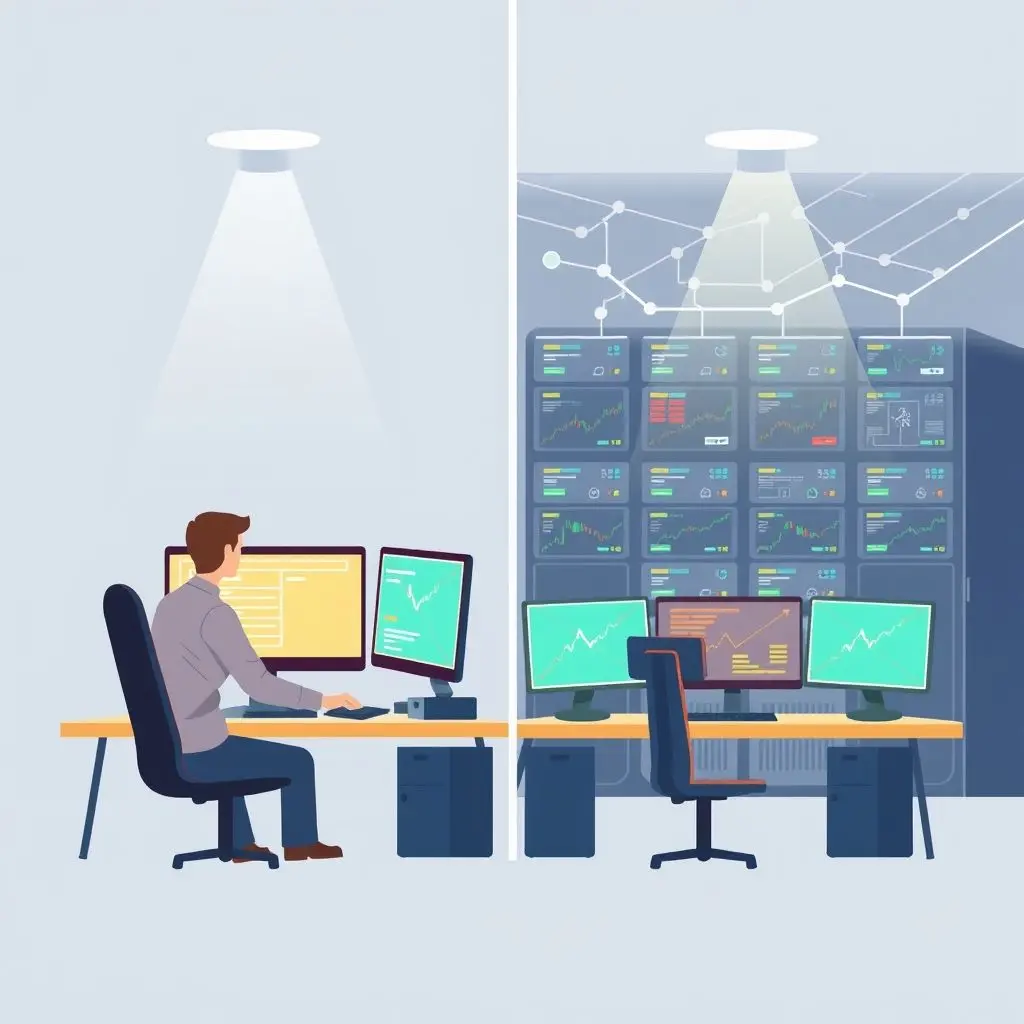
Frequently Asked Questions (FAQs)
Let’s address some common queries about this evolving space:
Q: How is AI different from traditional algorithmic trading?
A: Traditional algorithms follow fixed, pre-programmed rules. AI/ML algorithms can learn from data, identify complex patterns, and adapt their strategies over time without explicit reprogramming, making them more dynamic and potentially more robust in changing markets.
Q: Can a retail trader use AI for trading?
A: Yes, it’s becoming more feasible. While competing in high-frequency trading is difficult, retail traders can utilize AI/ML through readily available libraries, platforms offering algorithmic trading capabilities, or by developing less speed-sensitive strategies using tools like Python and common ML frameworks. It still requires significant technical knowledge and understanding of markets.
Q: Is AI trading guaranteed to make money?
A: Absolutely not. AI algorithms are tools based on historical data and patterns, which may not hold in the future. They are susceptible to risks like overfitting, data quality issues, technical failures, and unpredictable market events. Trading always involves risk, and AI doesn’t eliminate that.
Q: What skills are needed to build AI trading systems?
A: A strong blend of skills is required: programming (Python is popular), data analysis, statistics, machine learning expertise, and a solid understanding of financial markets and trading strategies. It’s a multi-disciplinary field.
Q: How do regulators view AI in trading?
A: Regulators worldwide are actively studying and developing frameworks to monitor and regulate algorithmic and AI trading. Concerns include market stability, fairness, potential manipulation, and ensuring accountability when things go wrong. It’s an evolving regulatory landscape.
The Road Ahead for Intelligent Trading Systems
Artificial Intelligence is no longer a futuristic concept in financial markets; it’s a present-day reality that is continually advancing. From analyzing news sentiment to executing complex cross-asset strategies in microseconds, AI-powered algorithms are increasing market efficiency in some ways, while also introducing new layers of complexity and potential systemic risks.
As AI capabilities grow – with advancements in areas like reinforcement learning and explainable AI – their role in trading is only set to expand. This evolution demands not only technological innovation but also careful consideration of ethical implications, regulatory frameworks, and the fundamental structure of financial markets in an era of increasing automation.
The lightning-fast, AI-driven world of algorithmic trading is here to stay, promising both unprecedented opportunities and significant challenges as it continues to redefine who, or rather, *what*, truly moves the market.
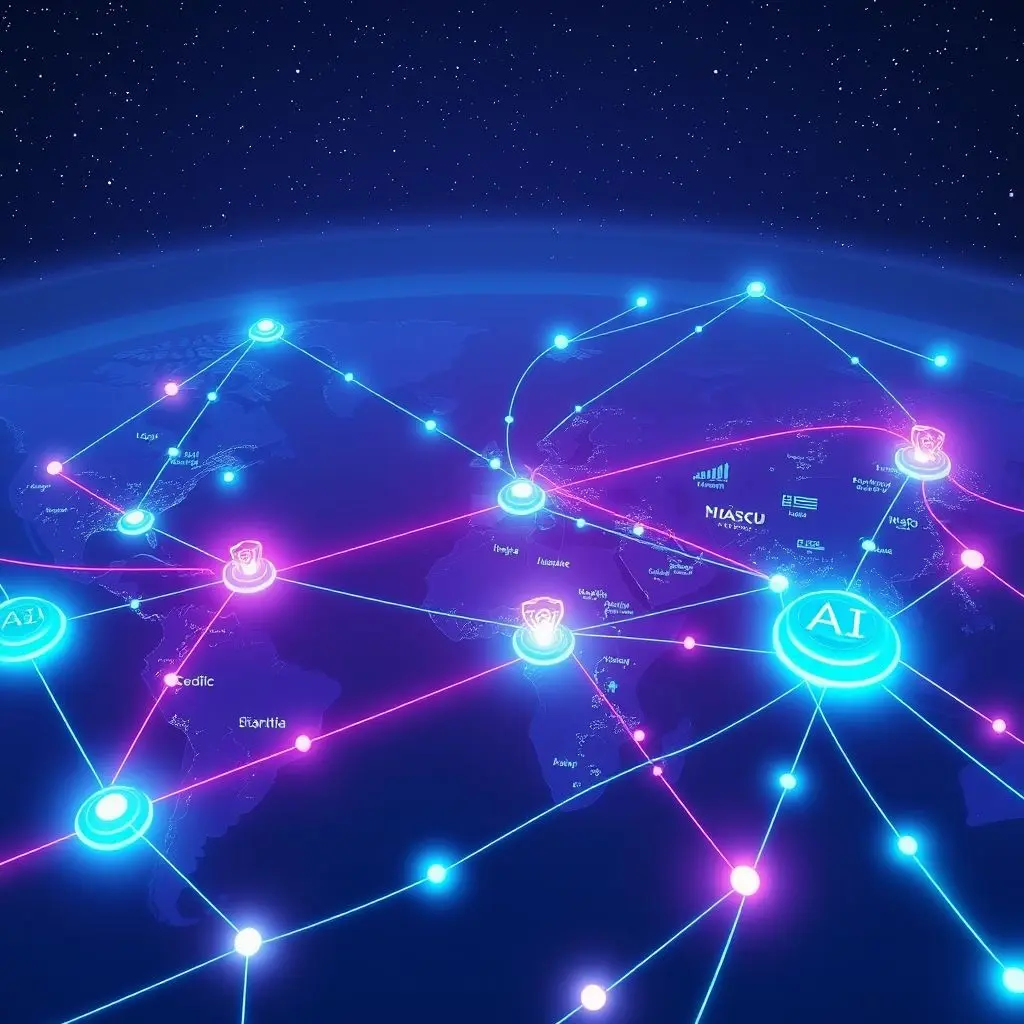
Disclaimer: This article is for informational purposes only and does not constitute financial advice. Trading in financial markets involves significant risk of loss. Always consult with a qualified financial advisor before making any investment decisions. Information regarding AI capabilities in trading reflects general trends; specific performance depends heavily on implementation and market conditions. AI models can fail or perform poorly.

